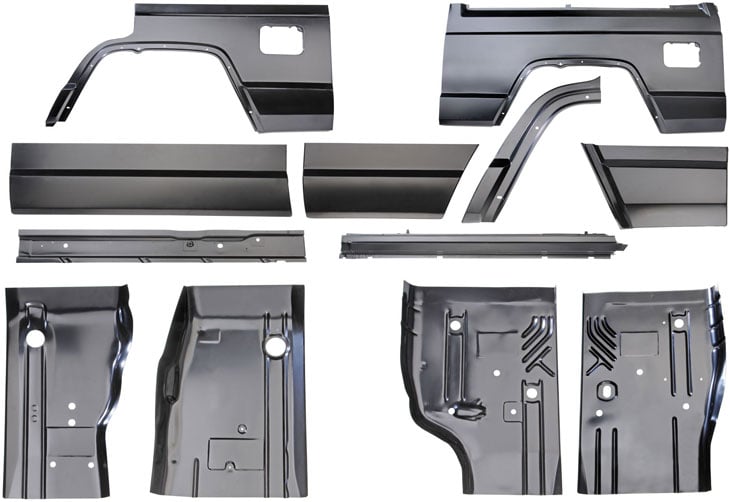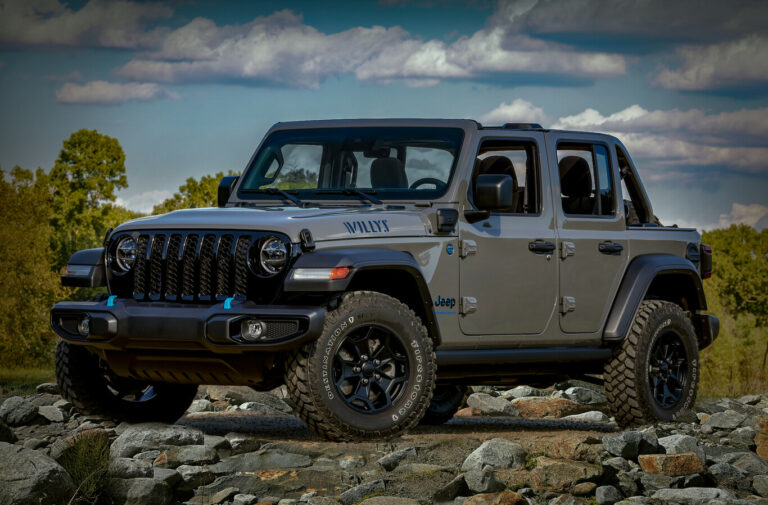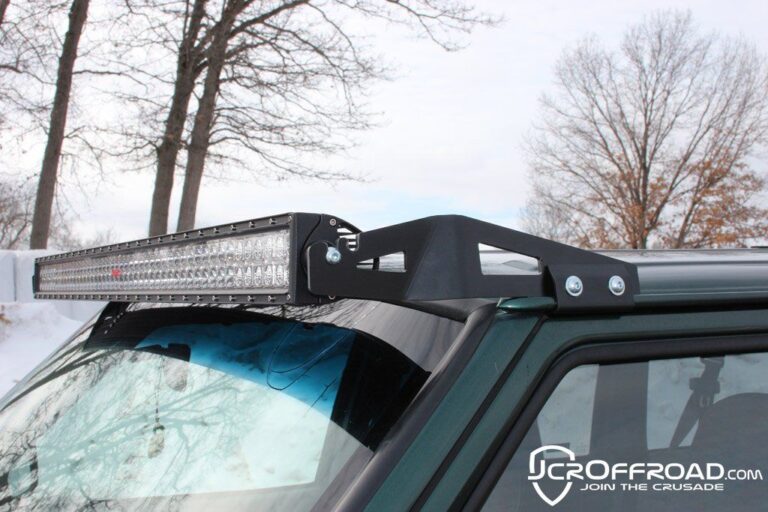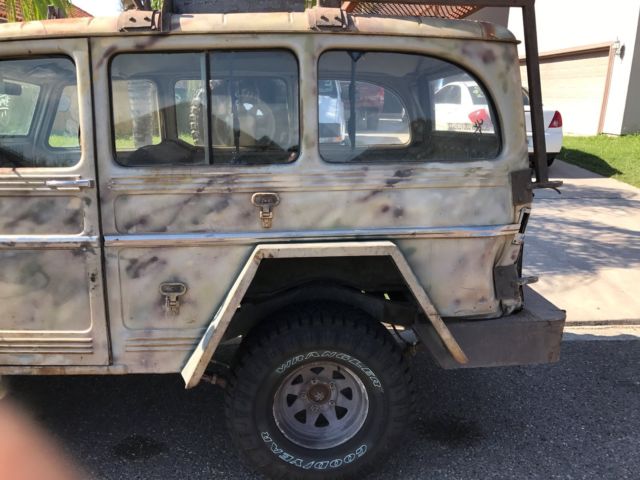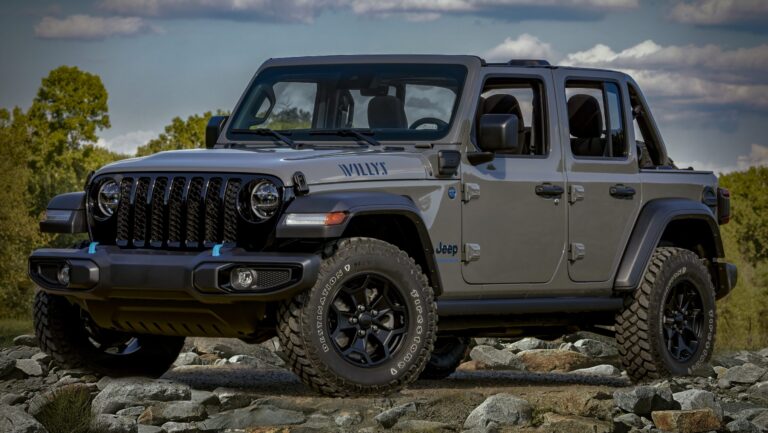Jeep Cherokee XJ Parts: The Definitive Guide to Keeping Your Legend Alive
Jeep Cherokee XJ Parts: The Definitive Guide to Keeping Your Legend Alive jeeps.truckstrend.com
The Jeep Cherokee XJ, produced from 1984 to 2001, is more than just a vehicle; it’s an automotive icon. Revered for its unibody construction, legendary off-road capability, surprising on-road manners, and rugged simplicity, the XJ has cultivated a passionate following that continues to grow years after its production ceased. Whether you’re a seasoned off-roader, a daily commuter, or a weekend adventurer, the XJ offers a unique blend of utility and character. However, like any vehicle, especially one that’s two decades old or more, the longevity and performance of your XJ depend heavily on the quality and availability of its parts. Understanding the vast ecosystem of Jeep Cherokee XJ parts is crucial for anyone looking to maintain, repair, or upgrade this enduring legend.
This comprehensive guide will delve into the world of XJ parts, offering insights into everything from routine maintenance components to high-performance off-road upgrades. We’ll explore where to find parts, what to look for, and how to make informed decisions to keep your XJ running strong and conquer any terrain.
Jeep Cherokee XJ Parts: The Definitive Guide to Keeping Your Legend Alive
Understanding XJ Parts: OEM, Aftermarket, and Used
Navigating the market for XJ parts requires an understanding of the different types available, each with its own benefits and drawbacks.
- Original Equipment Manufacturer (OEM) Parts: These are parts made by the original manufacturer (Jeep/Chrysler) or by a supplier contracted by them. OEM parts are designed to be an exact fit and offer the same performance as the components your XJ came with from the factory. While they typically offer the highest quality and guaranteed compatibility, they are often the most expensive and, for a vehicle as old as the XJ, can be difficult to source new.
- Aftermarket Parts: Produced by companies other than the original manufacturer, aftermarket parts are a vast category. They range from direct OEM replacements to performance upgrades. Many reputable aftermarket brands specialize in XJ components, offering parts that meet or exceed OEM specifications, often at a lower price. This category also includes a wide array of specialized off-road components like lift kits, heavy-duty axles, and armor. Quality can vary significantly, so research and reputable brands are key.
- Used Parts: Sourced from salvage yards, online forums, or private sellers, used parts can be a cost-effective solution, especially for larger or rarer components like body panels, interior pieces, or entire axle assemblies. While affordable, the condition and longevity of used parts are less predictable, requiring careful inspection and an understanding of the component’s history.
The choice between these types often depends on your budget, the specific part needed, and your desired outcome (e.g., stock restoration vs. off-road build).

Essential Maintenance and Common Replacements: Keeping Your XJ Running
Routine maintenance is the bedrock of XJ longevity. Over time, certain parts are prone to wear and tear due to age, mileage, or the stresses of off-road use.
- Fluids and Filters: Regular oil changes, transmission fluid flushes, differential fluid replacements, and coolant flushes are non-negotiable. Don’t forget air filters, fuel filters (often overlooked), and cabin air filters (if equipped). These basic items prevent premature wear and maintain efficiency.
- Braking System: Brake pads, rotors, calipers, and brake lines are critical safety components. Due to the XJ’s weight and potential for aggressive driving, inspect these regularly. Upgraded brake kits are popular for improved stopping power.
- Ignition System: Spark plugs, ignition coils (on later models), and distributor components (on earlier models) are essential for engine performance and fuel economy.
- Belts and Hoses: Serpentine belts, radiator hoses, and heater hoses degrade over time. A failing hose or belt can lead to overheating or loss of power steering/charging, so replace them proactively.
- Cooling System Components: The XJ’s cooling system is notorious for being borderline, especially the 4.0L engine. Radiators, water pumps, thermostats, and fan clutches are common failure points. Upgrading to a heavier-duty radiator or an electric fan conversion is a popular modification.
- Suspension and Steering Components: Bushings, ball joints, tie rod ends, control arms, and leaf springs wear out, leading to sloppy handling, vibrations, or "death wobble." Given the XJ’s age, virtually all these components will eventually need replacement. Aftermarket heavy-duty options are widely available and often superior to OEM for longevity.
- Sensors: Crankshaft position sensors (CPS), oxygen sensors, and throttle position sensors (TPS) are common culprits for various engine performance issues, including no-starts, rough idle, and poor fuel economy.
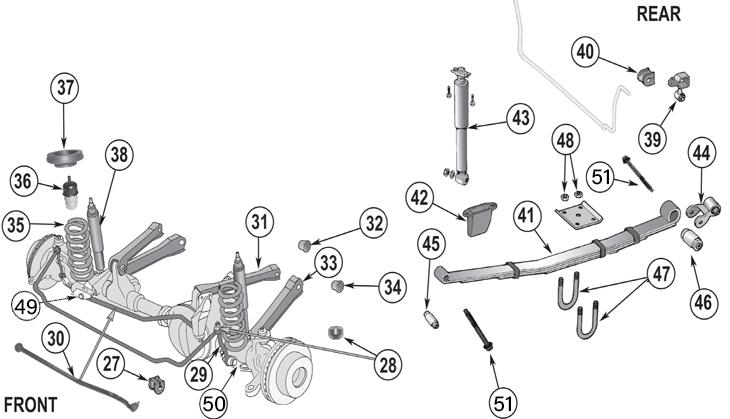

Practical Advice: Always use a reputable service manual (like a Haynes or Chilton manual, or even better, the factory service manual) for torque specifications and proper procedures. Regular visual inspections are your best defense against unexpected breakdowns.
Upgrading Your XJ: Performance, Off-Road, and Cosmetic Parts
The XJ’s simple design makes it an ideal platform for customization and upgrades. The aftermarket teems with parts to enhance its off-road prowess, improve performance, or refresh its appearance.
- Suspension Lift Kits: This is arguably the most common XJ modification. Lift kits typically include new coil springs, leaf springs, shocks, and often control arms, track bars, and sway bar disconnects. Lifts range from mild (2-3 inches for larger tires) to extreme (6+ inches for serious rock crawling). Choose a kit based on your intended use and budget.
- Drivetrain Upgrades:
- Axles: Swapping the stock Dana 30 front and Dana 35 rear axles for stronger units like a Dana 44, Ford 8.8, or even custom axles is common for heavy off-road use.
- Lockers/Limited Slips: These improve traction by ensuring power goes to both wheels on an axle, vital for challenging terrain.
- Gearing: Changing differential gears (re-gearing) is often necessary after installing larger tires to restore lost power and optimize performance.
- Transfer Case: Upgrades like a Slip Yoke Eliminator (SYE) and CV driveshaft are highly recommended for lifted XJs to prevent driveline vibrations.
- Armor and Protection:
- Bumpers: Heavy-duty steel front and rear bumpers offer improved approach/departure angles, provide recovery points, and often accommodate winches.
- Rock Sliders: Protect the vulnerable rocker panels from trail damage.
- Skid Plates: Guard the oil pan, transmission, transfer case, and fuel tank from impacts.
- Engine Performance (Mild): While the 4.0L is robust, minor upgrades like cold air intakes, improved exhaust systems, and larger throttle bodies can yield small gains in horsepower and torque.
- Recovery Gear: Essential for off-roading, this includes winches, recovery straps, shackles, and high-lift jacks.
- Lighting: Upgrading headlights to brighter LED or HID units significantly improves nighttime visibility. Auxiliary off-road lights are popular for trail use.
- Interior and Exterior Cosmetics: Replacement body panels, fenders, doors, and tailgates are available for rust repair or collision damage. Interior parts like seats, dash components, and door panels can be sourced to refresh a worn cabin. Weatherstripping replacement is key to reducing wind noise and water leaks.
Sourcing XJ Parts: Where to Buy and What to Look For
Finding the right parts for your XJ can be a treasure hunt, but several reliable sources exist:
- Online Retailers:
- Major Off-Road Specialists: Quadratec, Morris 4×4 Center, 4 Wheel Parts, ExtremeTerrain. These offer a vast selection of aftermarket parts and upgrades specifically for Jeeps.
- General Auto Parts Sites: RockAuto, Summit Racing, Jegs. Excellent for maintenance parts and performance components, often at competitive prices.
- Amazon/eBay: Can be good for smaller items or specific niche parts, but always verify seller reputation and part fitment.
- Local Auto Parts Stores: AutoZone, Advance Auto Parts, O’Reilly Auto Parts. Convenient for common maintenance items, but their selection for specialized XJ parts might be limited.
- Junkyards/Salvage Yards: A goldmine for used OEM parts, especially interior pieces, body panels, and drivetrain components. Prices are often very low, but condition varies.
- Online Forums and Social Media Groups: Websites like NAXJA (North American XJ Association) and dedicated Facebook groups are excellent for buying/selling used parts, getting advice, and finding local XJ enthusiasts.
- Dealerships: For new OEM parts, though availability for older XJ components can be spotty and prices high.
Tips for Sourcing:
- Verify Fitment: Always double-check that the part is compatible with your specific XJ year and engine. Many parts changed slightly over the XJ’s production run.
- Read Reviews: For aftermarket parts, customer reviews can provide valuable insight into quality and durability.
- Compare Prices: Don’t buy the first part you see. Shop around, as prices can vary significantly between retailers.
- Consider Quality vs. Cost: Sometimes, spending a little more on a reputable brand for critical components pays off in the long run.
Practical Advice and Actionable Insights
- Invest in Tools: If you plan on doing your own work, a good set of metric and standard wrenches, sockets, a torque wrench, and specialized tools (like a ball joint press or spring compressors for lifts) will pay for themselves.
- Join the Community: The XJ community is incredibly supportive. Online forums and local clubs are invaluable resources for troubleshooting, advice, and finding parts.
- Don’t Ignore Small Issues: A minor clunk or leak can quickly escalate into a major repair if ignored. Address problems promptly.
- Budget for the Unexpected: Older vehicles will always surprise you. Set aside a contingency fund for unforeseen repairs.
- Know Your Limits: While many XJ repairs are DIY-friendly, some jobs require specialized knowledge or equipment. Don’t hesitate to consult a trusted mechanic for complex tasks.
Jeep Cherokee XJ Parts: Estimated Price Table
Please note that these are estimated price ranges in USD and can vary significantly based on brand (OEM, aftermarket, performance), quality, retailer, and whether the part is new or used. Installation costs are not included.
| Part Category | Specific Part | Estimated Price Range (USD) | Notes |
|---|---|---|---|
| Maintenance | Oil Filter | $5 – $20 | Varies by brand (e.g., Wix, Mobil 1, OEM) |
| Air Filter | $15 – $40 | Standard replacement | |
| Spark Plugs (set of 6) | $25 – $75 | Copper (cheaper) vs. Platinum/Iridium (more expensive, longer life) | |
| Serpentine Belt | $30 – $70 | ||
| Radiator Hose (Upper/Lower) | $15 – $40 each | ||
| Brakes | Front Brake Pads (set) | $30 – $80 | Standard aftermarket |
| Front Brake Rotors (pair) | $60 – $120 | Standard aftermarket | |
| Master Cylinder | $50 – $150 | ||
| Suspension/Steering | Front Coil Springs (pair) | $80 – $200 | Stock replacement |
| Leaf Springs (pair) | $150 – $400 | Stock replacement, heavy-duty options more | |
| Shocks (set of 4) | $150 – $400 | Basic aftermarket, performance shocks can be $500+ | |
| Upper/Lower Control Arms (set) | $100 – $300 | Basic replacement, adjustable/heavy-duty more | |
| Tie Rod End (each) | $25 – $75 | ||
| Ball Joints (set for one side) | $50 – $150 | ||
| Engine/Drivetrain | Water Pump | $40 – $120 | |
| Radiator | $100 – $300 | Aftermarket aluminum/heavy-duty can be $200-$500+ | |
| Crankshaft Position Sensor (CPS) | $40 – $100 | OEM recommended for reliability | |
| Oxygen Sensor (O2) | $30 – $80 each | ||
| Fuel Pump Assembly | $100 – $300 | ||
| Off-Road Upgrades | 3-inch Lift Kit (complete) | $400 – $1,200+ | Includes springs, shocks, often control arms/track bar |
| Front Bumper (Winch-ready) | $300 – $800+ | Steel, can be significantly more for premium brands/features | |
| Rock Sliders (pair) | $200 – $600+ | ||
| Winch (8,000-10,000 lb) | $300 – $800+ | Basic to mid-range | |
| Slip Yoke Eliminator (SYE) | $200 – $400 | Essential for lifted XJs to prevent driveline vibration | |
| Body/Interior | Headlight (single) | $30 – $80 | Standard halogen, LED upgrades significantly more |
| Tail Light Assembly (single) | $40 – $100 | ||
| Replacement Door Panel (used) | $50 – $200 | Varies greatly by condition and availability | |
| Window Regulator (power) | $50 – $150 |
Frequently Asked Questions (FAQ) About Jeep Cherokee XJ Parts
Q1: Are Jeep Cherokee XJ parts still readily available?
A1: Yes, absolutely! Despite being out of production for over two decades, the aftermarket support for the XJ is incredibly robust. Many companies still manufacture replacement and upgrade parts due to the vehicle’s enduring popularity. Used parts are also widely available from salvage yards and enthusiast communities.
Q2: Should I buy OEM, aftermarket, or used parts for my XJ?
A2: It depends on the part and your budget.
- OEM: Best for critical engine sensors (like the CPS) and components where precise fit and factory reliability are paramount, though often expensive and harder to find new.
- Aftermarket: Excellent for most replacement parts, upgrades (lifts, bumpers), and often offer better value or performance than OEM. Research reputable brands.
- Used: Great for body panels, interior pieces, or larger components like axles when budget is a concern, but always inspect condition carefully.
Q3: What are the most common XJ parts to replace due to wear?
A3: Common wear items include: suspension bushings (leaf springs, control arms), ball joints, tie rod ends, cooling system components (radiator, water pump, thermostat), crankshaft position sensor, oxygen sensors, and various fluid leaks (power steering, oil pan).
Q4: Can I use parts from different XJ model years on my Cherokee?
A4: Many parts are interchangeable across the 1984-2001 production run, especially for the 4.0L engine. However, there are significant differences between early (pre-1997) and late (1997-2001) models, particularly with interior, exterior styling, and some electrical components. Always verify compatibility for your specific year.
Q5: How do I know if a part will fit my XJ?
A5: Most online retailers and parts catalogs will ask for your XJ’s year, make, and model, and sometimes engine size. It’s also helpful to know if it’s 2WD or 4WD. When in doubt, check part numbers, consult a factory service manual, or ask experienced XJ owners on forums.
Q6: Is it worth upgrading my XJ, or should I just keep it stock?
A6: The XJ is an excellent platform for upgrades, especially for off-roading. Many owners find that modest lifts, larger tires, and basic armor significantly enhance capability without compromising daily drivability. Whether it’s "worth it" depends on your intended use and passion for the vehicle. Many XJs are still going strong because of thoughtful upgrades and maintenance.
Conclusion
The Jeep Cherokee XJ’s legacy as a rugged, versatile, and endlessly customizable vehicle is undeniable. Its continued presence on roads and trails around the world is a testament to its robust design and the dedication of its owners. Understanding the landscape of Jeep Cherokee XJ parts – from essential maintenance items to transformative performance upgrades – is not just about keeping your vehicle running; it’s about preserving a piece of automotive history and unlocking its full potential. By making informed choices about where to source your parts and prioritizing quality, you can ensure your XJ continues to be a reliable companion for countless adventures to come. The XJ isn’t just a car; it’s a lifestyle, and with the right parts, your legend will endure.

